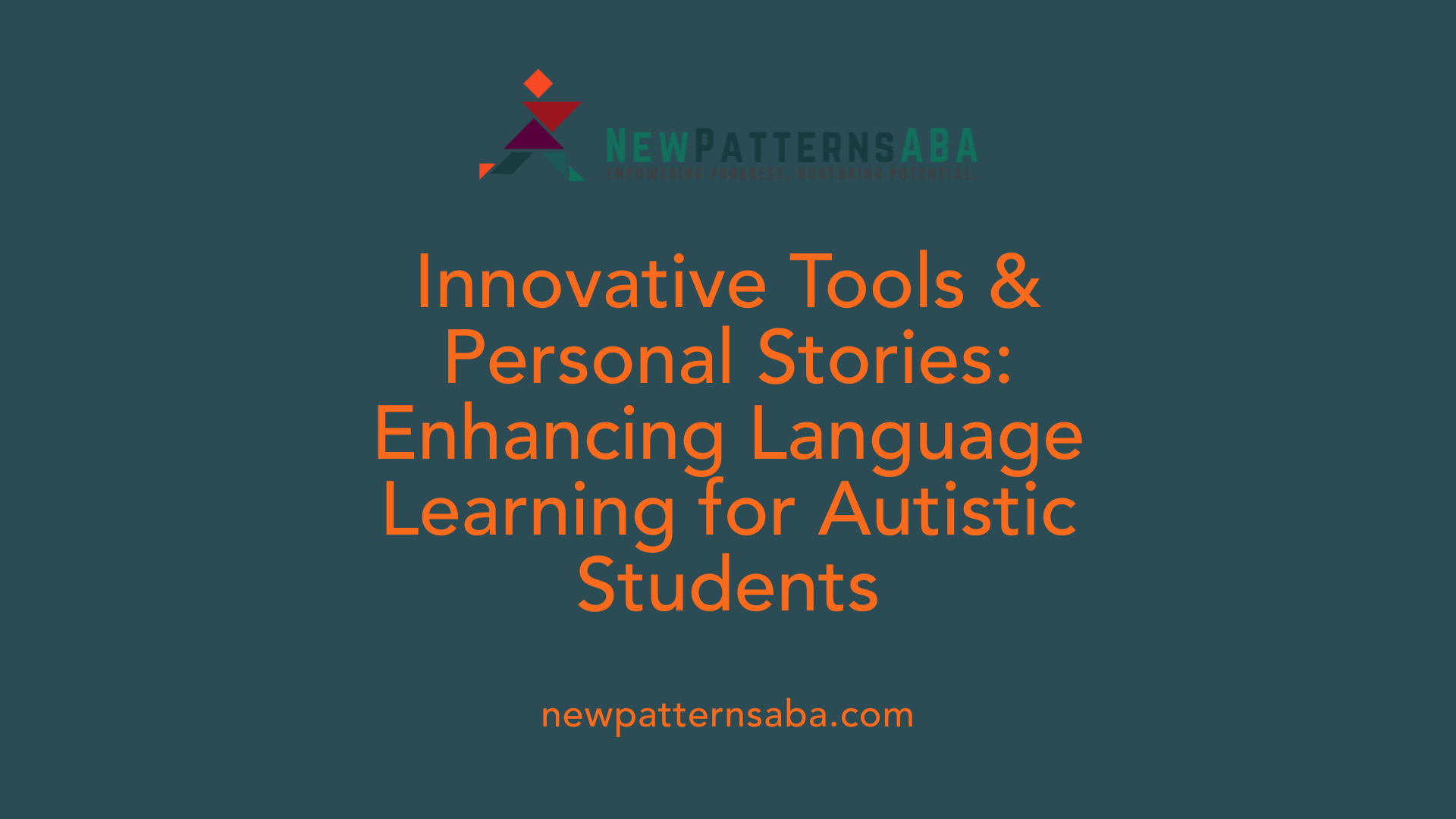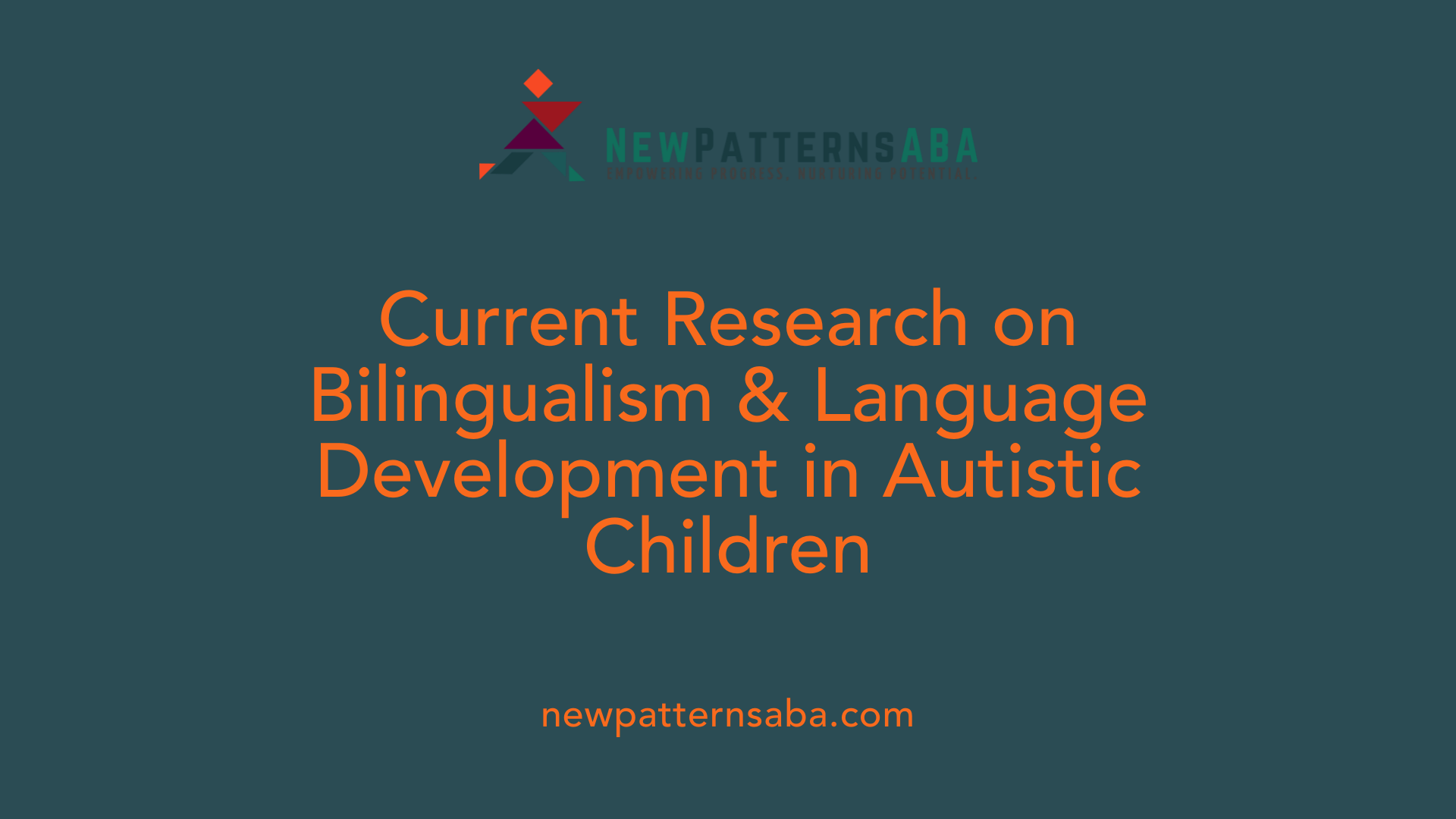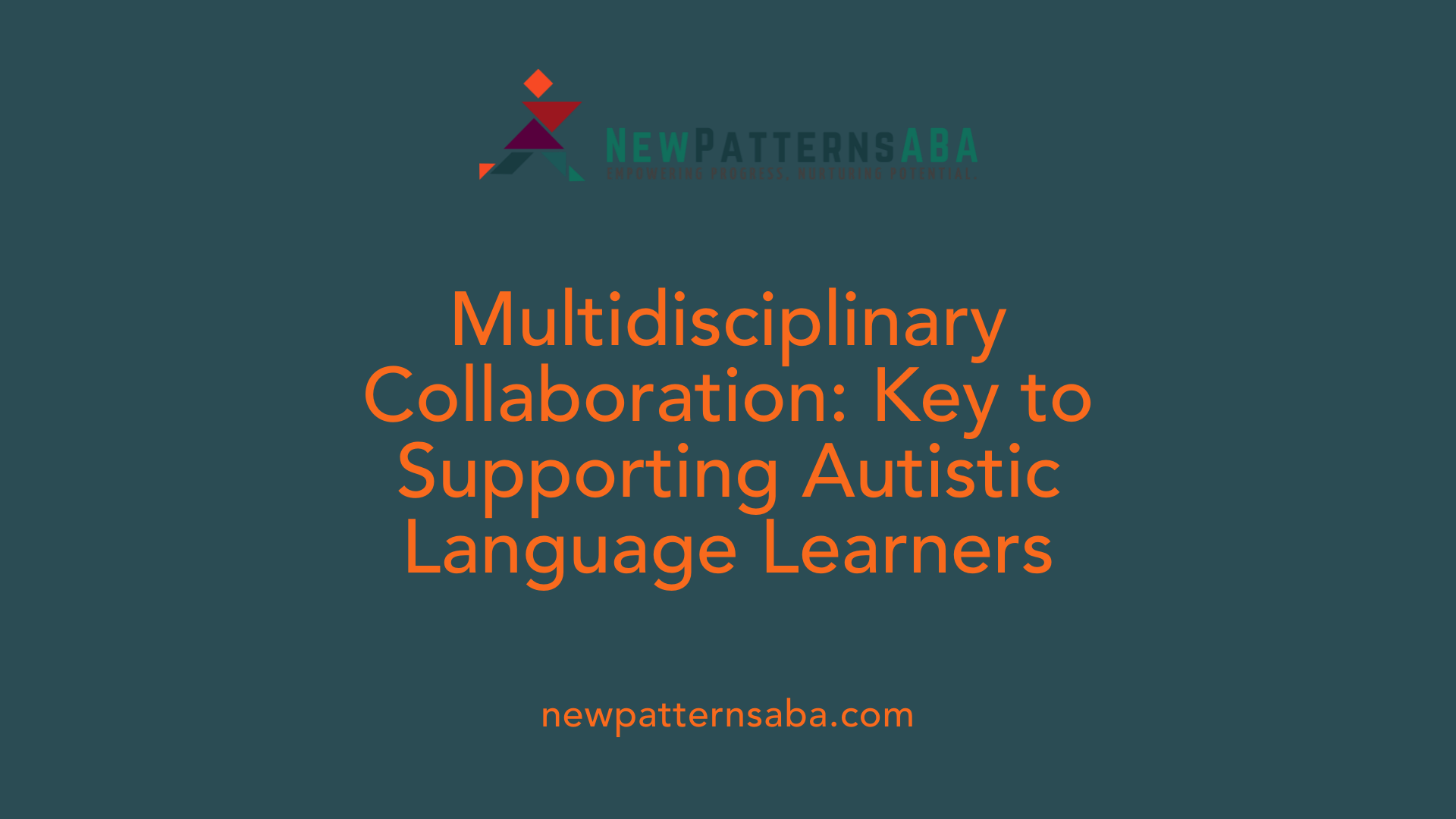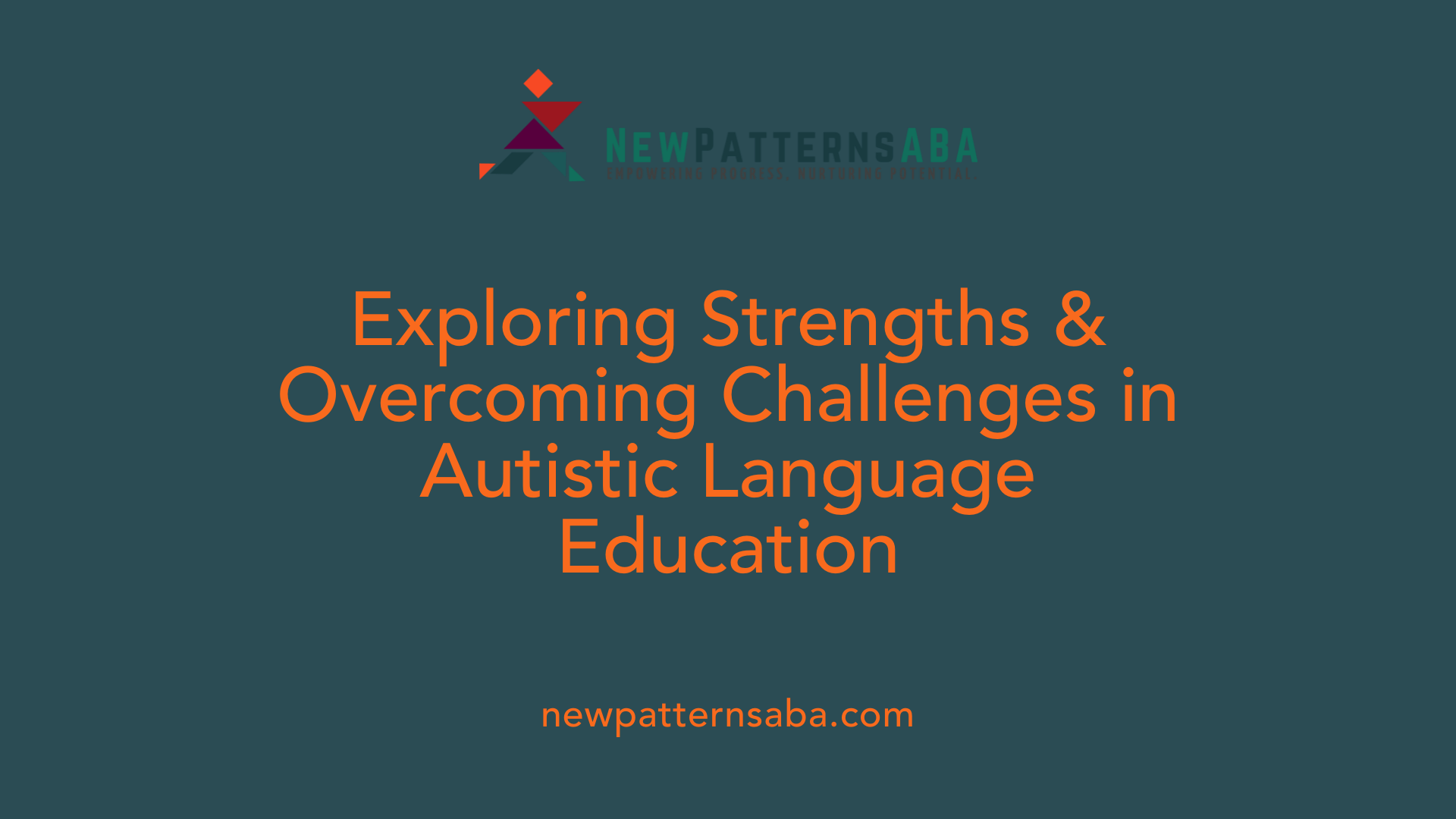Inclusive Strategies Transform Language Learning for Autistic Students
Empowering Autistic Learners Through Tailored Language Education
Supporting autistic students in foreign language courses requires understanding their unique needs, leveraging their strengths, and employing evidence-based strategies. This article explores best practices, collaborative approaches, and innovative techniques to foster an inclusive, engaging environment where neurodiverse learners can thrive in language acquisition and cultural understanding.
Resources and Personal Experiences Informing Practice

What resources and personal experiences can inform best practices for teaching autistic learners in foreign language courses?
Effective teaching of autistic students in foreign language classes relies on a combination of research, specialized curricula, and real-world insights. Resources such as scholarly articles and evidence-based curricula like Waterford’s CAR-certified programs provide foundational knowledge tailored to early reading and language skills for neurodivergent learners.
Organizations like The Incredible Years offer practical guidance on inclusive teaching strategies, emphasizing positive reinforcement and behavioral supports that foster engagement and motivation. Visual aids, including picture cards, symbols, and icons, support understanding across different languages and sensory preferences.
Interactive books and task cards designed specifically for neurodivergent students help promote literacy and language development. These tools encourage active participation, catering to visual and kinesthetic learning styles.
Personal insights from educators and families involved with autistic students are invaluable. They highlight the effectiveness of structured routines, visual schedules, and sensory accommodations such as quiet spaces or sensory-friendly materials, which reduce anxiety and sensory overload.
In addition, leveraging multilingual resources and adopting culturally responsive teaching methods ensure that lessons respect and reflect students' backgrounds. Visual supports in multiple languages and culturally relevant content can boost confidence and foster a sense of inclusion.
Ongoing professional development is crucial. Training that promotes interdisciplinary collaboration between ESOL teachers, speech-language pathologists, and behavioral specialists helps create a comprehensive support system. This teamwork allows for personalized instruction that meets the unique needs of each learner.
Together, these resources and experiences form a holistic approach, fostering language acquisition and social development in autistic learners while respecting their individual strengths and challenges.
Language Development, Bilingualism, and Autism: Current Insights

What does current research say about language development and bilingualism in autistic children?
Recent studies indicate that exposure to multiple languages does not harm the language development of children with autism. In fact, bilingualism can support various cognitive and social skills. Research shows that autistic children who are bilingual often achieve similar levels of communication abilities compared to their monolingual peers. Some evidence even suggests they may have advantages in certain areas, such as verbal fluency, nonverbal communication, and understanding different perspectives.
Bilingual environments can contribute positively to family cohesion and cultural identity. For families with members speaking different languages, maintaining native languages fosters stronger relationships and cultural continuity. However, limited use of the native language can sometimes create barriers to social integration and cultural expression.
Despite these positive findings, research on bilingualism in autistic children is still developing. There are notable gaps, especially in understanding how bilingual exposure influences pragmatic language skills—such as conversation skills and social cues—and phonological aspects, including pronunciation and phoneme development.
Overall, the evidence supports encouraging bilingualism in autistic children. It appears safe and beneficial, offering cognitive, social, and emotional benefits. Clinicians and parents are advised to foster multilingual environments rather than shy away from them, promoting an inclusive approach that recognizes the strengths and diverse needs of children with autism.
Collaborative Strategies for Supporting Autistic Students

How can educators collaborate with professionals to implement effective support techniques for autistic students in language learning?
Support for autistic learners in language development benefits greatly from collaborative, multidisciplinary efforts. Teachers, speech-language pathologists, psychologists, and special educators can work together to craft personalized education plans grounded in evidence-based practices. This teamwork helps in designing interventions that are tailored to the individual needs of each student, ensuring that curriculum modifications, teaching methods, and environmental adaptations create a conducive learning environment.
Ongoing professional development plays a critical role. Training teachers in autism-specific teaching approaches, including the use of visual aids, concrete language, and positive reinforcement, enhances their ability to address sensory sensitivities and communication challenges. It is vital to foster consistent communication among educators, families, and specialists, which ensures that strategies are aligned and reinforced both at school and home.
Tools like the Picture Exchange Communication System (PECS), apps such as Proloquo2go, and peer-mediated interventions like Classroom-Wide Peer Tutoring (CWPT) and Peer-Assisted Learning Strategies (PALS) are increasingly incorporated into classroom routines. These approaches promote social interaction and help develop language skills in natural settings.
Furthermore, educator training in autism-focused methodologies, including functional communication training and sensory-friendly classroom management, supports creating inclusive environments. Such settings emphasize social engagement, language development, and mutual understanding among all students.
By fostering partnerships among professionals and families, and applying evidence-based practices, classrooms become supportive spaces where autistic students can thrive academically, socially, and emotionally. This collaborative approach ensures that interventions are dynamic, individualized, and rooted in the latest research, ultimately enriching language learning experiences.
Understanding Challenges and Harnessing Strengths

What challenges and strengths are associated with autistic learners in foreign language learning environments?
Autistic learners often encounter specific difficulties when engaging in foreign language education. They might struggle with language processing, finding it hard to interpret new vocabulary, grammar rules, or abstract concepts within a second language. Social communication challenges can impede participation in interactive or conversational activities, which are common in language learning programs. Additionally, understanding subtle nuances, idioms, metaphors, or cultural references may be particularly challenging for some students.
Despite these hurdles, autistic learners also bring notable strengths that can facilitate language development. Many possess exceptional memory skills, especially for vocabulary, spelling, and patterns. Their ability to recognize and analyze patterns aids in grasping grammatical structures and syntax. Logical thinking and pattern recognition can make decoding new words or language rules more straightforward for some learners.
Moreover, some autistic individuals demonstrate creative uses of language or display a vivid interest in specific areas, including linguistics or phonetics, which can be harnessed to motivate and enrich their learning experience. Their traits, such as detail orientation and a systematic approach, can be advantageous when mastering the intricacies of a new language.
Recognizing the broad spectrum of autism is crucial, as it means each learner's profile varies significantly. For some, social and pragmatic language skills may be particularly weak, while others may excel in phonological or lexical areas. This heterogeneity underscores the importance of personalized educational approaches.
Why is a personalized approach important?
Interventions that acknowledge individual differences and capitalize on each learner’s strengths are essential for successful language acquisition. Tailored strategies might involve emphasizing visual learning for students who thrive on pictures and symbols, focusing on logical pattern-based learning for those with strong analytical skills, or providing structured routines that offer predictability.
Collaborative efforts between educators, speech therapists, and families facilitate the development of supports that fit each student's unique profile. For example, a student with strong pattern recognition might benefit from grammatical drills using visual aids, while another may find success through storytelling and cultural exploration.
How can support strategies leverage strengths?
Supporting autistic learners effectively involves creating an inclusive environment that values their capabilities. Using visual supports, such as picture cards, videos, and schedules, enhances understanding and reduces anxiety. Structured routines with consistent expectations help learners anticipate and engage more confidently.
Incorporating their interests through songs, stories, or games related to themes they enjoy can boost motivation and persistence. Positive reinforcement, patience, and small milestones encourage continued effort.
Collaboration with specialists like speech-language pathologists or ABA providers experienced in bilingual development ensures that interventions are evidence-based and tailored. This multidisciplinary approach allows educators to utilize various tools—visual aids, assistive technology, simplified language—and methods like direct modeling or cue-based prompts.
Recognizing the diversity within ASD and adjusting interventions
Given the diverse profiles within autism, interventions must be adaptable. Some learners may require additional processing time, alternative assessments like non-verbal demonstrations, or sensory-friendly environments free from overwhelming stimuli.
For example, providing class materials 24 hours in advance helps students prepare and process information at their own pace. Avoiding high sensory stimulation, such as loud noises or multimedia overload, minimizes distractions.
In sum, understanding that each autistic learner's profile is unique, and designing flexible, strength-based supports, is pivotal. Such tailored approaches foster confidence, engagement, and meaningful progress in learning a new language.
| Aspect | Strategies | Benefits |
|---|---|---|
| Processing & Memory | Visual supports, memory aids | Better retention & understanding |
| Social Communication | Contextual cues, visual cues | Enhanced social interaction |
| Pattern & Logic | Systematic drills, pattern recognition | Facilitates grammar & syntax learning |
| Motivation | Interests, gamification | Increased engagement & persistence |
| Sensory Environment | Sensory-friendly classroom | Reduced stress & distraction |
Tailoring Teaching Methods for Autistic Learners
How can teaching methods be tailored to accommodate autistic learners in language classrooms?
Effective language instruction for autistic students relies on personalized, sensory-aware, and structured approaches. Visual supports are invaluable tools; these include flashcards, picture schedules, and videos, which help students understand and retain language concepts more easily by providing concrete visual cues.
Structured routines with clear language and repetition foster predictability, reducing anxiety and encouraging consistent learning. For example, daily labeling exercises or repeating common phrases can solidify understanding and facilitate communication.
Incorporating students' individual interests into lessons motivates engagement and makes learning more meaningful. Using songs, games, or stories related to these interests—especially bilingual or culturally relevant materials—can enhance vocabulary retention and social interaction.
Creating sensory-friendly environments is crucial. This involves minimizing loud noises, bright lights, and overwhelming visuals. Providing sensory accommodations such as noise-canceling headphones or a quiet corner allows students to self-regulate and stay focused during lessons.
Collaboration with therapists, speech-language pathologists, and families ensures consistency across different settings and aligns teaching strategies with each learner’s needs. This teamwork helps tailor interventions, ensuring that language goals are relevant and attainable.
Finally, employing positive reinforcement and targeted social skills training creates a supportive atmosphere. Celebrating small successes and encouraging peer interactions build confidence, promote meaningful language use, and support overall developmental growth.
Fostering an Inclusive Future in Language Education
Supporting autistic students in acquiring foreign languages involves integrating diverse, evidence-based strategies that acknowledge their unique profiles. Visual supports, collaborative professional partnerships, culturally responsive curricula, and personalized instruction foster optimal learning environments. Emphasizing strengths such as pattern recognition and memory, while providing sensory accommodations and consistent routines, enhances engagement and skill development. Encouraging multilingualism and cultural exploration not only benefits language proficiency but also strengthens social skills and cultural awareness, vital for global citizenship. Continuous professional development and inclusive practices are essential to ensure all learners can access and succeed in language education, ultimately fostering a more equitable and enriching global community.
References
- World Language Learning for Neurodivergent Students
- Autism-inclusive teaching of foreign languages in ... - DCAD
- Helping Learners with Autism Who Have English as a ...
- Can those of us with autism learn foreign languages easily?
- How to Teach an Autistic Child a Second Language
- Foreign Language Study Can Benefit Students With Autism
- Language and communication skills in multilingual ...
- 24 Classroom Activities for Kids with Autism
- Resources & Effective Reading Programs for Autism ...
- Autism and Diverse Learners: Resource Gallery






